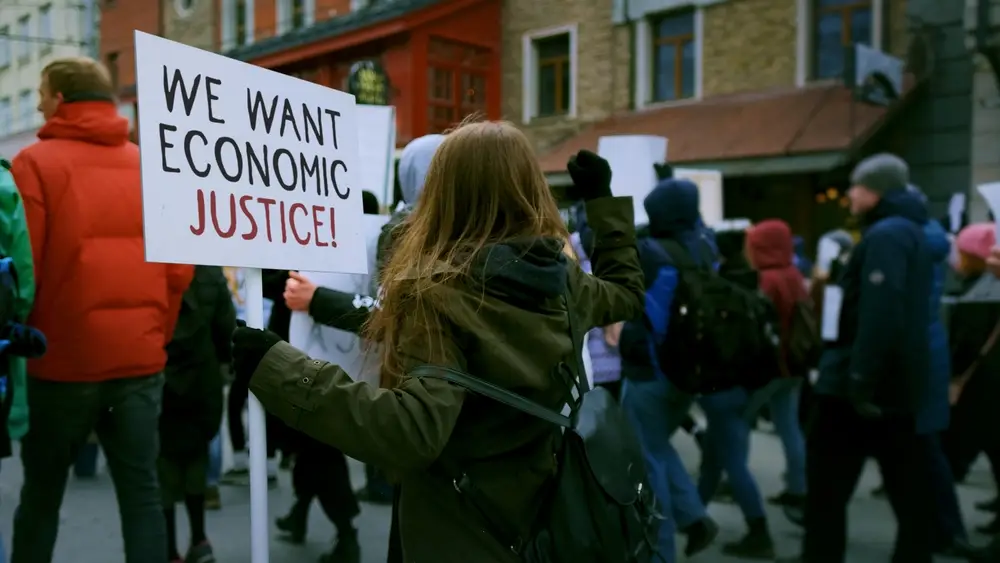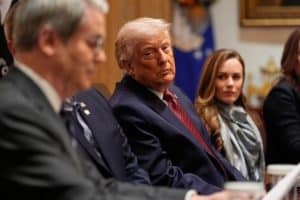With Donald Trump about to re-enter the White House and his sidekicks about to assume control over Congress, America’s progressives are once again shifting — to playing defense. But the best defense, as one old football adage suggests, almost always turns out to be a good offense.
In the coming Trump redux, can we progressives take that adage to heart? Dare we go on offense and maybe even snatch a victory or two? We certainly can — if we start pushing for what the vast majority of Americans so want to see: an America where the really rich don’t run the show.
How much our richest run that show has never been more obvious. Campaign spending figures help tell that story.
Back at the beginning of our 21st century, out-of-state contributions to House and Senate races, be they from political action committees or individuals, funneled about the same amount of cash to candidates as in-state donors. These PACs and individuals faced strict limits on how much they could contribute politically. PACs, for their part, could accept no more than $5,000 from individuals each year and give no more than $5,000 directly to a candidate in each election cycle.
Enter the Super PAC. In 2010, the U.S. Supreme Court’s Citizens United decision essentially gave America’s wealthiest and the corporations they run free rein to spend as much as they want to boost the candidates they find most appealing. This green light for what became known as “Super PACs” gave America’s richest the legal capacity to cement in place a new and “improved” plutocracy.
In the 2024 election cycle alone, former AFL-CIO political director Michael Podhorzer points out, Super PACs and related groups have spent seven times more on the candidates they support than those candidates have raised “from individuals in their own states.”
And that spending is coming overwhelmingly from the richest of America’s rich. In this year’s presidential race, according to the latest pre-election stats available, some 60 percent of all outlays on Donald Trump’s behalf were coming from the Super PAC universe, and 90 percent of that universe’s spending, Michael Podhorzer adds, was coming from the top donor 1 percent.
Just who from the ranks of our super rich are doing all this spending? We don’t exactly know for sure. Spending by outside contributors this election cycle, researchers from the campaign funding watchdog OpenSecrets reported on Election Day, hit an all-time record $4.5 billion, “with more than half of that spending coming from groups that do not fully disclose the source of their funding.”
America’s wealthiest “have always weighed in on politics,” as the business journal Forbes understatedly noted the day after Election Day, but their capacity to make a difference has significantly “ramped up.” These wealthy “can now make unlimited donations,” and those donations without limits have been making each election “more expensive than the last.”
And billionaires like things that way. Exulted crypto billionaire Tyler Winklevoss just after Trump’s triumph: “We are on the brink of a new American Renaissance.”
But billionaires today have an electoral influence that goes far beyond their hefty campaign contributions. In today’s social media environment, these rich can speak directly to potential voters. Between October 1 and Election Day, a Forbes analysis shows, America’s 200 richest billionaires posted over 2,000 comments on this year’s elections. Those comments gained over 10 billion reads.
READ: Why Democrats Lost in Rural America. Again.
And where did we end up, after all this billionaire spending and speaking out? We ended up with an exasperated electorate. Voter turnout in 2024, the political scientist Peter Dreier points out, ended up down more than 16 million votes, with Trump pulling over 2 million fewer ballots than in 2020 and Kamala Harris collecting over 14 million fewer than Joe Biden pocketed in 2020.
That turnout for the Democrats, Dreier argues, reflects the continuing weakness of America’s labor movement, despite the isolated labor organizing triumphs of recent years. Back in the mid-20th century, unions represented over a third of all U.S. private-sector workers. Last year, only 6 percent of private sector workers carried union cards.
If today’s union membership rate stood at a mere 20 percent of all workers, Dreier contends, “Harris would have won” because unions would have been able to reach more working people directly — including those “who might be gun owners or evangelical Christians” — “about why to vote” for pro-worker candidates.
Three generations ago, in mid-20th century America, high unionization rates kept in place World War II’s high federal tax rates on the nation’s highest incomes, rates that would run over 90 percent on top-bracket income throughout the 1950s. That twofer of a strong labor movement and high taxes on our nation’s richest would go on to nurture a political climate open to greater equality in every sphere.
Today’s richest, by contrast, pay taxes at rates that amount to a tiny fraction of what they pocket, and vast swatches of the American economy have essentially no union presence at all. Trump and his deep-pocketed pals can flourish and thrive in this environment. The task for the rest of us: to change it.
Can we win that fight? We can. Just look at the numbers.
Earlier this year, polling found that 71 percent of all likely voters — and even 53 percent of self-described Republicans — think billionaires should be paying more in taxes. Over two-thirds of the American people, Gallup reports, see themselves as union supporters. Even more Americans — 80 percent — favor higher taxes on corporations with CEOs who make over 50 times what their workers make. Top CEOs today average hundreds of times what their workers earn.
Our super rich are now celebrating what they see as a glorious future. Let’s put them on the defensive.
This article was originally published at Inequality.org, a project of the Institute for Policy Studies. It is reprinted here via Creative Commons 3.0.






